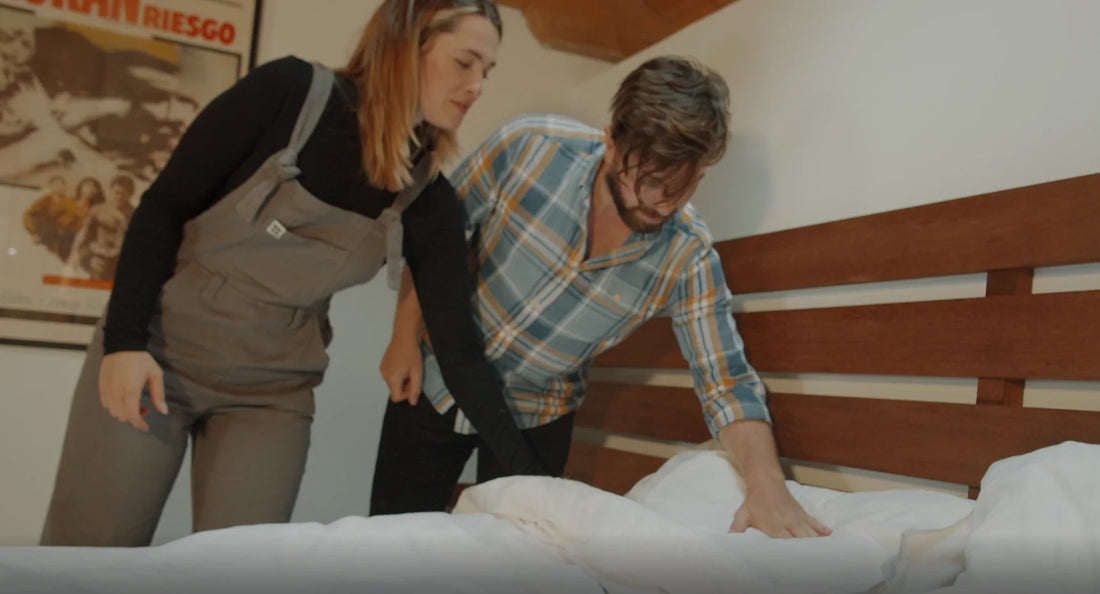
Time for a change?
Share
Be honest, when was the last time you replaced your pillows and duvet? If your bedding is older than your teenage children, then it's time for a change!! Read on for advice on when to replace your bedding and also some tips on how to make pillows and duvets last longer.
Pillows
According to the Experts at The Sleep Foundation, pillows should be replaced every 1-2 years to make sure that they stay comfortable, clean and supportive.
Certain pillows are more long-lasting than others; generally speaking, pillows made with higher quality materials will last longer. Synthetic fibre pillows may be a lower cost initially, however they are not as breathable as other options so will have a shorter lifespan of 6-18 months. Feather and down pillows are more expensive, but will retain their shape and height for longer, so can last anywhere between 1-3 years.
Here are some signs that you need a new pillow:
- The filling is no longer evenly distributed or feels lumpy
- The pillow feels flat and you are waking up with neck ache
- The pillow has acquired an unpleasant odour or is discoloured (this is due to a build up of body oils, sweat, makeup etc – a pillow protector will delay this, but not indefinitely)
For synthetic pillows – fold your pillow in half and then let go. If it springs back to its original shape, then the pillow is still supportive.
For natural pillows – place on a solid surface before folding in half and squeezing out the air. Again, if it springs back to normal then you shouldn’t need to replace your pillow just yet.
Duvets
The Sleep Council recommends changing your duvet every 5 years, although this depends on the quality of your duvet & how well you look after it (also, if it’s a 13.5 tog duvet you only use for 1-2 months a year, then it won’t need replacing as often.)
Signs it’s time for a new duvet:
-
Cold spots – where the filling has clumped/moved from one section to another, you will end up with cold spots
-
Leaking filling – this will usually occur around the stitching
-
An odour/discoloration – did you know you can also get duvet protectors? This will help keep your duvet fresher for longer.
How to make your duvet last longer:
-
Better quality duvets last longer - Choose a duvet with 100% cotton cover which is breathable. A good thread count will prevent the filling from poking out, but also means that it is less prone to dust mite build up. Look for box stitch and baffle box construction to keep the filling evenly distributed and more durable.
-
Don't over wash your duvet - wash it once every 6 to 12 months and refresh it in between if possible by airing it outdoors. Make sure your washing machine is big enough for the duvet (more likely you’ll need it professionally washed) and ensure it is fully dried afterwards to protect the filling.
-
Use good quality bed linen - a duvet cover will protect your duvet from body oils, fluids, hair, etc. Wash it once a week to keep your bed linen and duvet fresh.
Recycling Pillows & Duvets
Try to repurpose your old bedding, rather than it ending up in landfill. Old pillows could be used as outdoor floor cushions or kneelers for gardening. Both pillows and duvets could be used as pet bedding etc.
There are textile recycling facilties, where the fillings of old pillows and duvets can be made into insulation etc.
